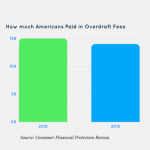The Third Wave Fund Is Funding The People Usually Overlooked By Big Philanthropy
One of the greatest inequalities that the philanthropy sector has failed to address is why many of the groups in charge of social change don’t reflect the populations they serve. Just 18% of nonprofit CEOs are minorities, a percentage echoed in the severe lack of diversity within most staff. The industry’s rank-and-file may be female dominated, but fewer than 45% of CEO roles are occupied by women. That’s despite the fact that many of these groups are battling issues like poverty and discrimination, which greatly affect the under-represented populations.
In mid-May, Third Wave Fund, a public grant-making group led by and for women of color, and intersex, queer, and trans people debuted a new model for how funders might change that. Third Wave’s solution is called the Grow Power Fund, a grant program that offers six organizations each a six-year grant of up to $40,000 annually for the sort of crucial operational investments that most private funders often limit or leave out: overhead costs, including money for expanding staff and professional coaching.

The structure of that initiative is important in two other big ways: All of the groups must be comprised of folks who actually resemble their service population. And the majority of those members, as with Third Wave’s own staff, should be under the age of 35. The point isn’t just to fund diverse leaders, but young ones, too, who might want to help but can’t afford to take the risk.
“What we saw was that there was a need out there to have a one-stop shop to support grassroots work at the local level,” says Third Wave Executive Director Rye Young. “Third Wave have really stepped into being that movement home for people who understand that resources are critical but that philanthropy is not necessarily reaching folks where they need it and when they need it.”
Grow Power recipients include the Asian American Organizing Project in Minnesota, Assata’s Daughters in Chicago, Immigrant Youth Coalition in California, and Trans Queer Pueblo in Phoenix, West Fund, in El Paso, and Youth Organizing Institute in central North Carolina. The goal isn’t just to fund more in-touch activist groups, but to create a progressive network in areas where conservatives rule and philanthropy has traditionally been underserved. Large foundations, for instance, tend to give one-eleventh of their average aid amount per person in some southern states, according to a new report by the National Committee for Responsive Philanthropy and Grant makers for Southern Progress.

“We’re kind of in a failure of our own making right now,” Young says. “I think it’s because of the long-term neglect of smaller organizations… and being too comfortable with having our power players be at the national level.”
Third Wave is a reference to third-wave feminism, a term coined and popularized by Third Wave Fund’s eventual cofounder, Rebecca Walker, in a 1992 story in Ms. Magazine. Walker, who was outraged that Clarence Thomas was accused of sexual harassment yet confirmed to the Supreme Court, called upon women from all cultures, and of all colors and sexualities to band together and protect their rights.
The group, originally called Third Wave Direct Action Corporation, launched later that year as a political mobilization effort. It coincided with a national argument over abortion, a centerpiece of the 1992 presidential campaign. But what was lost in that rhetoric, says Young, was recognition of the “structural oppression” of policies and practices that encouraged poverty and homelessness, limited health care access and educational opportunity, and enabled sexual abuse.
In 1997, Third Wave became a funding agency, backing others to expand their work. The group has a consistent donor base of around 700 people, including institutional givers like the Arcus Foundation, M.A.C. AIDS Fund, and Elton John AIDS Foundation, which allows it to dispense about a half-million in grants each year.

All told, the group has given $3.3 million toward 292 organizations, mostly in the southern and middle parts of the country. But over the last couple years, it has also switched tactics. Instead of just funding by cause, say “reproductive health and justice” or “freedom from violence”, they’re allocating money in a way that builds more groups to further the movement as a whole.
To boost the power of existing grassroots groups more immediately, Third Wave has also launched the Mobilize Power Fund, which issues monthly rapid response grants of up to $7,000 per group or $15,000 for coalitions, which can end up shortchanged if they have a pressing need that falls outside of large organizations granting cycles. “That gives emergency grants or time-sensitive grants to organizations doing grassroots movement building so that they can address unforeseen threats and opportunities that are coming their way,” Young says.
That program, which was launched in 2015, has seen requests quadruple since the Trump Administration began. Early success include like the spread of #SayHerName by Black Youth Project 100, a campaign that honored black women who were victimized by police brutality and racially motivated violence. It served as the model for another ongoing initiative, called Flush Transphobia Fund, which give has given out $100,00 in grants to groups staging direct actions against anti-trans legislation like exclusionary bathroom bills. The group plans to add a capacity-building fund this summer to support community-led groups figure out how to become more stable and sustainable.
“Sometimes in philanthropy, you have issues take center stage above people,” Young says. Creating localized groups strong enough to make change on many fronts might be the answer, especially if the leaders understand firsthand how so many systemic issues are connected.
In a world where leadership positions are still dominated by older white men, the organizations that get grants from the Third Wave Fund must be young and demographically similar to the people they’re serving.
One of the greatest inequalities that the philanthropy sector has failed to address is why many of the groups in charge of social change don’t reflect the populations they serve. Just 18% of nonprofit CEOs are minorities, a percentage echoed in the severe lack of diversity within most staff. The industry’s rank-and-file may be female dominated, but fewer than 45% of CEO roles are occupied by women. That’s despite the fact that many of these groups are battling issues like poverty and discrimination, which greatly affect the under-represented populations.
Fast Company , Read Full Story
(24)














